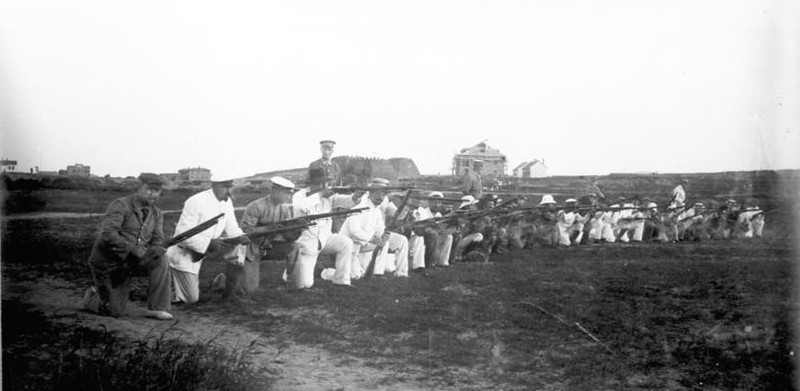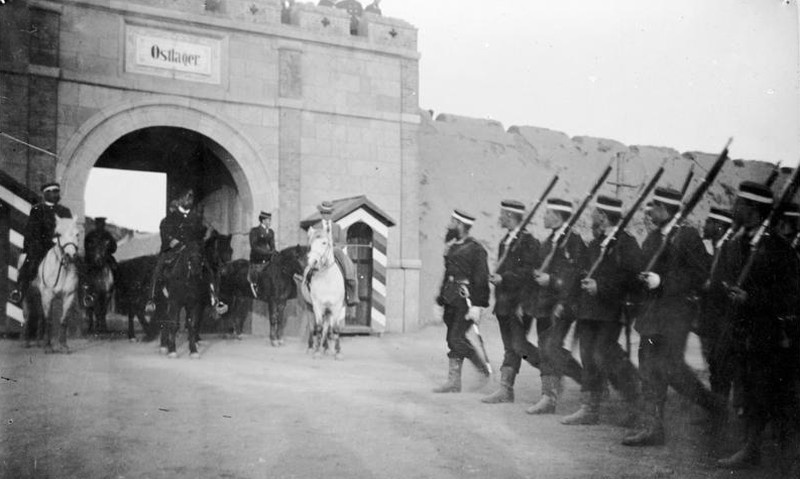|
Like other German civilians living
abroad those in China were subject to call up in the regular German
army as reservists as they would have been at home. Those in Tsingtao did
their annual training with the III. Seebataillon.
During the Boxer Rebellion,
German civilians formed an 800 strong "Kommando" Detachment
to defend the city if needed.
They did not see action.
When the First World War
broke out
German reservists living in China were called-up in the defence of Tsingtao.
Many were already Tsingtao residents but other Germans travelled from Peking and
all over China to answer the call, even non-combatant volunteers helped free up
other fit men from administrative and other jobs. In all the reservists and
volunteers added 76 officers and about 1,400 other ranks to the defence of
Tsingtao. They formed two extra companies of the III. Seebataillon and manned
artillery positions. These reservists wore regular Seebataillon and naval
uniforms with no special distinctions.
In addition a Landsturm was formed of older and less
fit Germans in the territory for internal police and guard duties.

Volunteers of the Kommando Detachment
training in Tsingtao, 1900
They wear mixed items of naval, marine infantry and civilian dress.
Photo from
BundesArchiv/WikiCommons

Reservists in the III.
Seebatallion parade in Tsingtao
They wear the standard Marine Infantry uniform of a dark blue
Litewka and peakless field cap with white hatband.
Photo from
BundesArchiv/WikiCommons
|